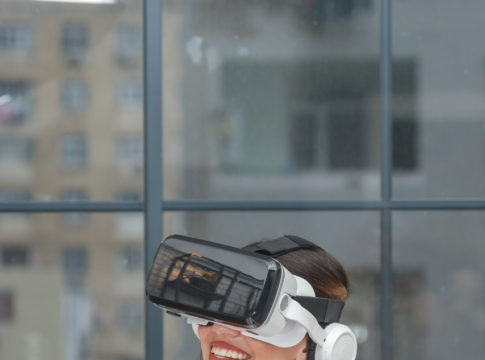Virtual Reality (VR) technology is reshaping the way we work, offering new opportunities for collaboration, innovation, and productivity in future workspaces. As remote work becomes more prevalent, VR is emerging as a powerful tool for creating immersive virtual environments that mimic real-world office spaces. However, while VR presents exciting possibilities, it also comes with certain risks and challenges that must be addressed to fully integrate it into future work environments.
Opportunities of VR in Workspaces
1. Enhanced Remote Collaboration
One of the biggest opportunities VR offers is enhanced remote collaboration. Instead of traditional video calls, workers can meet in virtual spaces that closely resemble real-world offices, conference rooms, or even creative environments like design studios. In these virtual environments, participants can interact with 3D objects, manipulate data, and share ideas as if they were physically present together.
This creates a sense of proximity and connection, even for teams that are geographically dispersed. VR can also facilitate collaboration across time zones, allowing for more effective teamwork in a globalized workforce.
2. Training and Skill Development
Another major advantage of VR in the workplace is its potential for training and skill development. In industries like manufacturing, healthcare, and engineering, workers can undergo simulations of real-world tasks in a risk-free virtual environment. This can be particularly valuable for learning complex or dangerous tasks without the need for physical resources or exposure to potential hazards.
By practicing in a VR environment, employees can gain hands-on experience, improve their skills, and build confidence before applying their knowledge in the real world. VR-based training programs are already being adopted by companies to reduce costs, enhance employee engagement, and improve knowledge retention.
3. Creativity and Innovation
VR can also foster creativity and innovation in the workplace. Virtual environments can be customized to stimulate new ideas and help employees visualize concepts in 3D. Architects, designers, and engineers, for example, can collaborate on projects in immersive environments, experimenting with different designs and structures before committing to physical prototypes. This capability speeds up the ideation and design process, leading to quicker decision-making and more efficient workflows.
Risks and Challenges
1. Data Security and Privacy Concerns
As with any new technology, data security is a critical concern in VR workspaces. VR systems often collect and store sensitive data, including user movements, voice recordings, and even biometric information. This data could be vulnerable to hacking or misuse, posing significant privacy risks for employees and companies.
To mitigate these risks, companies must invest in robust cybersecurity measures and transparent privacy policies. Ensuring that VR platforms comply with data protection regulations will be essential as the technology becomes more widespread in the workplace.
2. High Costs and Accessibility
Implementing VR technology in workspaces can be expensive, requiring specialized hardware, software, and training. For smaller businesses, the high initial investment in VR systems may be a barrier to entry. Additionally, employees will need access to VR equipment, which may not always be practical or affordable for remote workers in certain regions.
As the technology matures, VR systems are likely to become more affordable, but cost and accessibility challenges still remain, especially in developing markets.
3. Health and Well-being Concerns
Extended use of VR technology can lead to health issues, such as eye strain, motion sickness, and mental fatigue. Employers must be mindful of the physical and mental well-being of their employees when integrating VR into daily workflows. Setting guidelines for usage, implementing regular breaks, and providing ergonomic equipment will be important in minimizing the impact on employee health.
Conclusion
VR is poised to play a significant role in shaping the future of workspaces by enhancing collaboration, training, and creativity. However, companies must address the challenges of data security, costs, and employee well-being to successfully integrate VR technology into their work environments. As VR becomes more advanced and accessible, its potential to revolutionize the way we work is boundless, but careful implementation is key to unlocking its full benefits.
